Bicycling, Beering and Ballin’ In Berlin
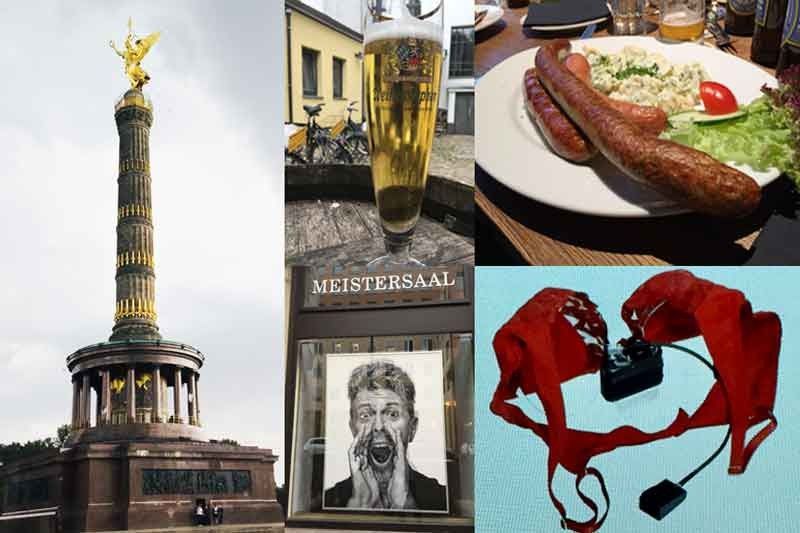
MANILA, Philippines — We are in a German beerhall surrounded by locals who are maniacally whooping over their team’s chances against Sweden in the Group Rounds. (SPOILER: That was a week ago. Things have changed since.) Beer mugs are hoisted, slabs of beef are being served and, outside in the beer garden, guttural hollers erupt in front of a large LCD screen during the last minutes of play.
We have just come from a three-hour bike tour through city streets and public parks — a very German activity that thankfully ends with a tall glass of beer in hand. But the details are a bit different: those city streets are marked by rough-hewn graffiti and some of those parks, busy with skateboarders, have the look of a bombed-out, post-apocalyptic future. People ride around on the U-Bahn subway with crates of beer and open bottles. Here, the local Berlin schnauze (the local version of bastos) bark at you if you’re in their way. It’s Kreuzberg, after all, not a Bavarian boat cruise. And in addition to those slabs of beef and fish, at BRLO Brwhouse, organic vegetarian dishes and craft beers fill the menu, not your typical sausages and ale.
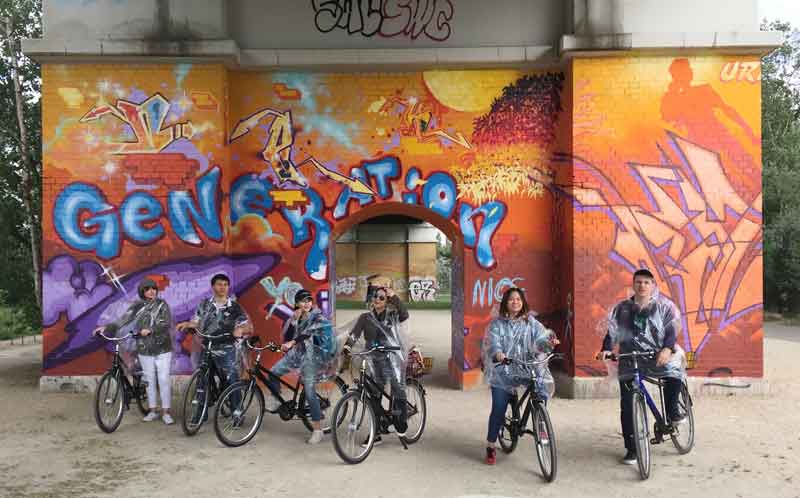
Art spinning: Berlin on Bike offers daily bike rentals (10 euros) and tours around the city’s art walls and parks.
Because this is Berlin, baby.
It’s very German, but always different, a point our guides repeatedly make during our six-day journey through the formally divided city sponsored by Scoot airlines, the low-cost carrier arm of Singapore Airlines, travel website Visit Berlin and the upcoming Berlin Brandenburg Airport (BER), set to open in 2019.
At Berlin’s Tegel Airport, we arrive after a 12-plus-hour flight from Singapore on Scoot’s widebody 787 Dreamliner (nicknamed “Bo Jio”). It’s an amazingly cheap fare — 195 euros (P12,062) one way from Singapore to Berlin or back — and that explains why Scoot is attracting so many young, millennial travelers flying through Singapore: the inaugural flight is 95 percent full, with 311 passengers.
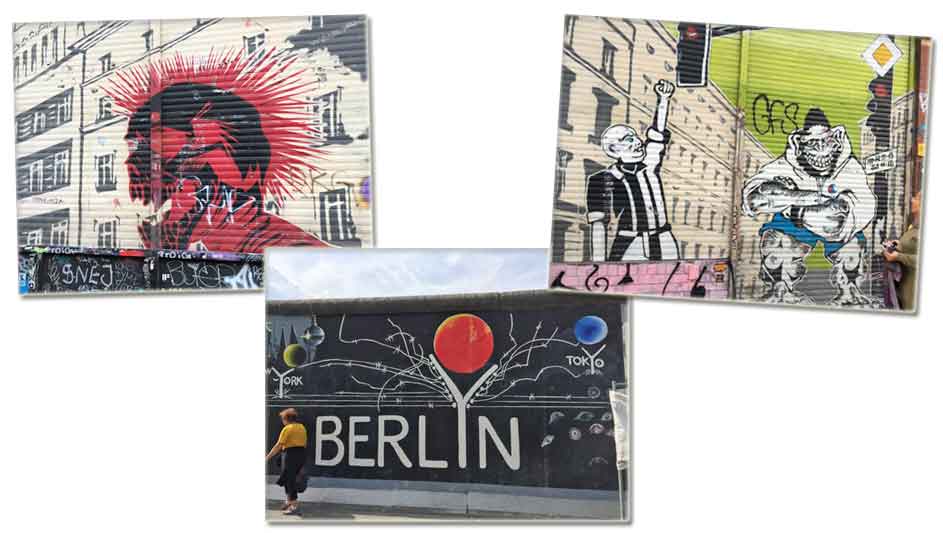
Street art and murals (left and right) decorate the arty Kreuzberg neighborhoods, while the East Side Gallery (center) offers a half kilometer of preserved Berlin Wall decorated by mural artists.
Young people are immersing themselves in this city with its rich, sometimes tragic history and lively cultural mix. It’s the kind of place where David Bowie and Iggy Pop chose to chill out after LA’s toxic chaos in the late ’70s, creating some of their best music. That’s about all you need to know about Berlin’s cool allure. It’s Germany’s capital after all, but severe bombing during WWII and Soviet occupation left it decimated and scarred for half a century. When the Berlin Wall fell, on Nov. 9, 1989, it came with a collective uproar not felt in this city for decades. Reunification between East and West Germany, followed by a joyous hosting of the World Cup in 2006, cemented a feeling that Berlin, and Germany, could heal its wounds.
‘Everyone please follow me to the death zone…’

Field of Stelae: “Memorial to the Murdered Jews of Europe” is a somber, immersive public installation.
Art:Berlin guide Bernd Gutberlet was here during the fall of the Berlin Wall, and he takes us to the typical exuberant tourist spots — the colorful 1,316-meter stretch of East Side Gallery, its wall remnants done up in color murals by international artists — but we also step into an area known as the “Death Strip.” It was a no-man’s land surrounded by guard towers and barbed wire, a place where East Berliners could literally look out their concrete Soviet-style apartment windows and see freedom just over the wall’s edge. Some 140 East Berliners died attempting to cross over, and throughout Berlin today, you can see square brass markers embedded in the city sidewalks: reminders of those who didn’t make it.
A walk through Berlin shows us, too, that the famed TV Tower (Fernsehturm) is not just a 368-meter tourist site, but a reminder that Soviet control was absolute from 1961 until the wall fell in ’89; its tip was expanded during the Cold War to reflect Soviet superiority, but it also served to block out radio and TV transmissions from the surrounding area; to the amusement of Berliners, sunlight reflecting off its Sputnik-shaped ball formed the sign of a Cross; they nicknamed it “Pope’s Revenge” (Rache des Papstes) to irritate Soviet officials, who had banned religion there.
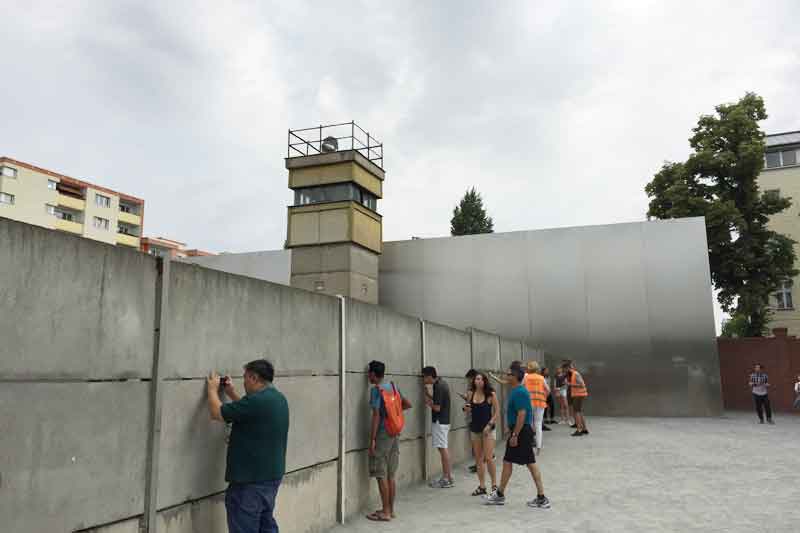
In the Death Strip, armed guards in towers watched over the border between East and West Berlin.
We learn that news of the wall’s imminent collapse happened by accident: on Nov. 9, 1989, as pressure mounted to bring down the wall, an East Berlin press secretary mistakenly read a statement that the checkpoint borders were now open (he forgot to include the part about getting stamped visas before exiting); within hours, the word went viral, and thousands were lined up at Bornholmer Strasse, ready to flood into the West. The gate was opened to prevent riots, a rare instance of “fake news” resulting in a positive outcome and greater freedom.
Kreuzberg, Baby
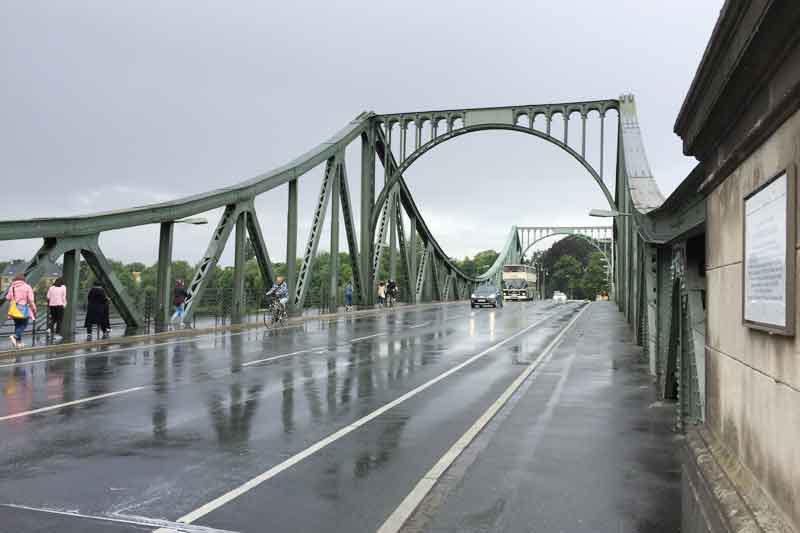
The famed Bridge of Spies — Glienicke Bridge across the Havel River at the border of Berlin and Potsdam — was an exchange point for Cold War agents.
You can get lost in Kreuzberg, what with its rejuvenated food scene (it’s where you’ll find Chef’s Table subject Tim Raue, whose eponymous 2-Michelin star restaurant takes Asian flavors to “a Berlin level,” as he puts it, as well as a plethora of German street flavors like Market Hall 9 with its tofu balls, curry stalls and Turkish fare); its music and art scene are young and lively (there are over 200 museums in Berlin, and they cater to every imaginable oddball taste, from the Currywurst Museum, to the Spy Museum, to the Ramones Museum, even to the David Hasselhoff Museum); and its bite of history is always tangy and nutritious (Look! There’s the punk club SO36, where Bowie and Iggy used to hang out!). You can easily navigate the city using the Berlin U-Bahn, a cavernous network of subways to get virtually anywhere.
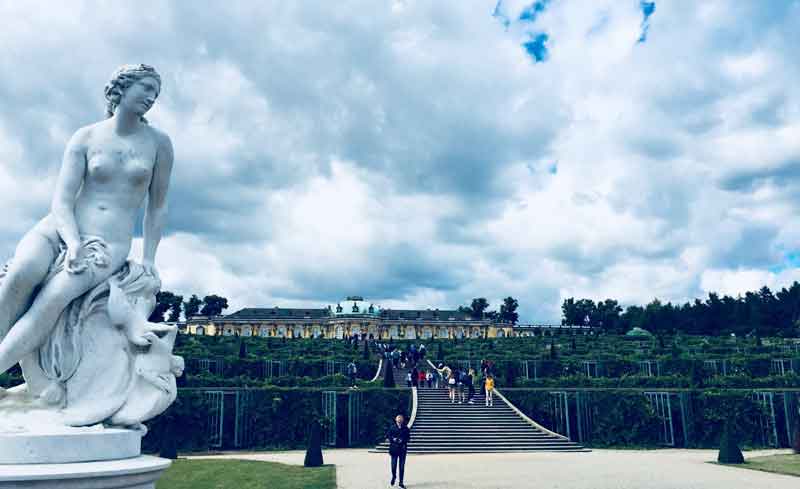
Prussian King Frederick the Great spent summers at Sanssouci Palace in Potsdam in the 1700s.
Taking a bike tour is one of the best ways to map out an aboveground journey, and we left from BIKINI Berlin, a mall featuring a food mart abutting the Berlin Zoo, with guides from Berlin on Bike who took us through Kreuzberg’s street art to explore five city parks, ending up at the old Tempelhof Airport, now converted into a park space that, incidentally, still houses many of the refugees admitted by Chancellor Merkel last year at its airport terminal. You can see an old aircraft near the same terminal, one used during the famous 1951 Berlin Airlift of food and supplies to West Germans, and you can even take your bicycle flying down the actual runway, pedaling as fast as your legs can take you. That’s Berlin, baby.



















